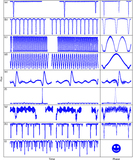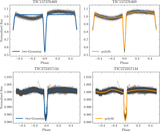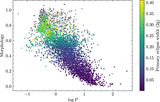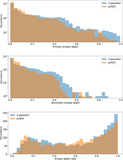Image Details

Caption: Figure 12.
The TESS combined differential photometric precision (CDPP). The top panel depicts the measured CDPP with a 0.5 hr running average, in ppm. The second panel provides a crowding measure per target, i.e., the fraction of light in the aperture from the observed target. The third panel corrects the original CDPP for crowding: corrected CDPP = CDPP/crowding. This assumes that the contribution of background light does not vary with time, which may or may not be true. Depicted in blue are all observed targets, and in red are the EBs. The bottom panel is the flattened version of the previous panel, divided by the bottom envelope.
Copyright and Terms & Conditions
© 2022. The Author(s). Published by the American Astronomical Society.












